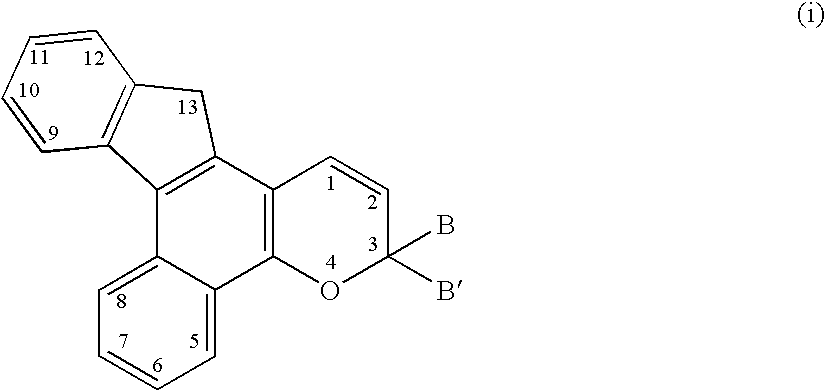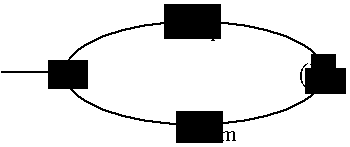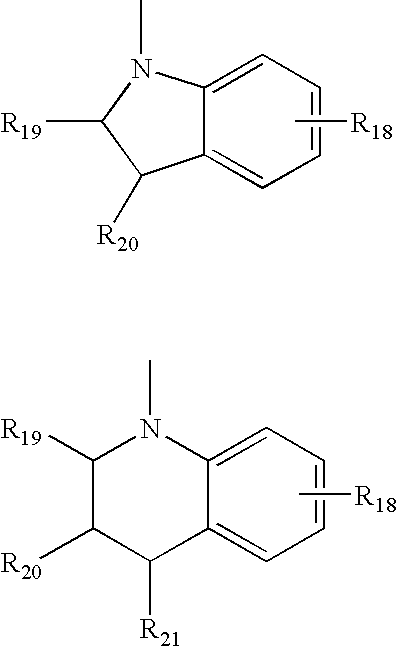Photochromic materials demonstrating improved fade rates
a technology of photochromic materials and fade rates, applied in the field of photochromic materials, can solve the problems of wearing less than optimal vision, and conventional photochromic materials often exhibit a “directional” dependency
- Summary
- Abstract
- Description
- Claims
- Application Information
AI Technical Summary
Benefits of technology
Problems solved by technology
Method used
Image
Examples
example 1
Step 1
[0159] 4-Trifluoromethylbenzoyl chloride (200 grams), 1,2-dimethoxybenzene (128 mL), and dichloromethane (1800 mL) were combined in a reaction flask under a nitrogen atmosphere. Tin (IV) chloride (168 mL) was added to the reaction mixture slowly drop-wise over 45 minutes. The reaction mixture was heated to reflux for 11 hours. It was subsequently cooled to room temperature and slowly poured into a mixture of 200 mL of hydrochloric acid and 1800 mL of ice water. The layers were phase separated. The organic layer was washed with 4 portions of water (1 L each) and then with 1.5 L of 20% saturated aqueous sodium hydroxide (w / v). The organic layer was dried over anhydrous sodium sulfate and then concentrated by rotary evaporation. The residue was recrystallized in 1 L of 15% ethyl acetate / 85% hexanes. The crystalline solid was collected by vacuum filtration yielding 132 grams of 3,4-dimethoxy-4′-trifluoromethylbenzophenone. This material was not purified further but was used direc...
example 2
[0165] Morpholine (1.4 mL) and anhydrous tetrahydrofuran (100 mL) were combined in a reaction flask. The reaction mixture was stirred at room temperature under a nitrogen atmosphere and a n-butyllithium solution (2.5M in hexanes, 6.2 mL) was added dropwise over 10 minutes. After stirring for 5 minutes, 3,3-di(4-methoxyphenyl)-6,7-dimethoxy-11-trifluoromethyl-13,13-dimethyl-3H,13H-indeno[2′,3′:3,4]naphtho[1,2-b]pyran from Example 1 Step 5 (5 g) was added to the reaction flask. The reaction mixture was stirred at room temperature for 2 hours. The reaction mixture was poured into a saturated aqueous sodium chloride solution and then acidified with concentrated hydrochloric acid until acidic. The layers were phase separated and the aqueous layer was extracted with one 100 mL portions of diethyl ether. The organic portions were combined and washed with saturated aqueous sodium chloride (200 mL). The organic layer was dried over anhydrous sodium sulfate and concentrated by rotary evaporat...
PUM
| Property | Measurement | Unit |
|---|---|---|
| Haze Gard Plus Instrument | aaaaa | aaaaa |
| Haze Gard Plus Instrument | aaaaa | aaaaa |
| Haze Gard Plus Instrument | aaaaa | aaaaa |
Abstract
Description
Claims
Application Information
 Login to View More
Login to View More - R&D
- Intellectual Property
- Life Sciences
- Materials
- Tech Scout
- Unparalleled Data Quality
- Higher Quality Content
- 60% Fewer Hallucinations
Browse by: Latest US Patents, China's latest patents, Technical Efficacy Thesaurus, Application Domain, Technology Topic, Popular Technical Reports.
© 2025 PatSnap. All rights reserved.Legal|Privacy policy|Modern Slavery Act Transparency Statement|Sitemap|About US| Contact US: help@patsnap.com



